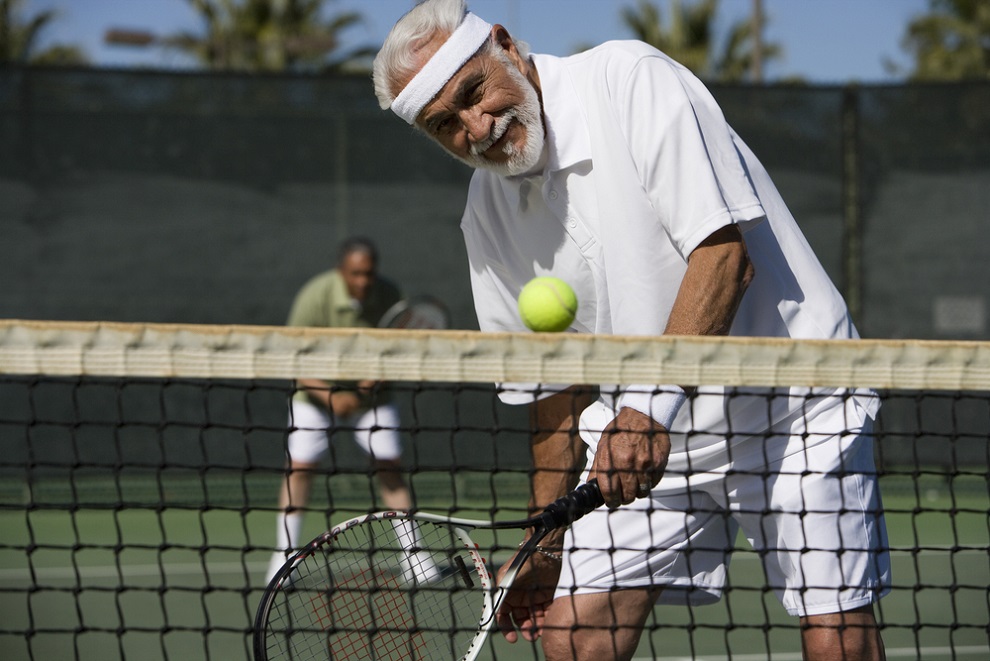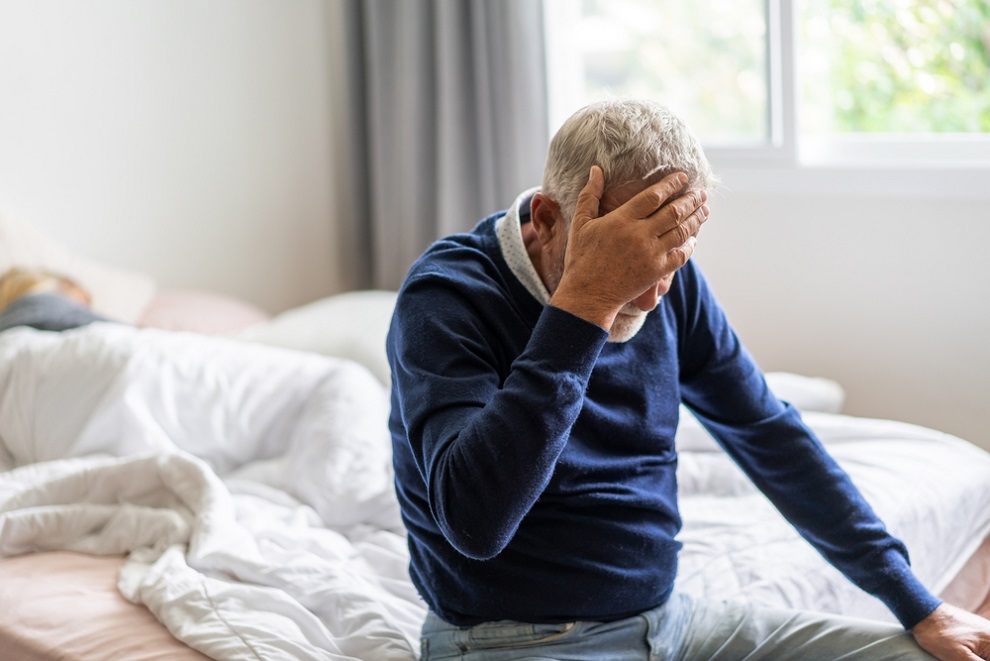As you get older, there are many benefits of exercise that encourage healthy aging. It's essential to stay fit and healthy, so you maintain your physical and emotional well-being. It works wonders for physical and mental health, leading to a more fulfilling and active life. The benefits can include improved sleep, reduced stress, improved balance and flexibility, and lower risk of chronic disease.
The Importance of Exercise in Aging
While we can't stop the aging process, we can do things to stay fit that benefit our health as we age, and physical activity is an important one. It helps to delay many of the issues that come with aging so you can live your daily life independently. (1)
Physical Benefits of Exercise
We know that exercise is good for health, and as we age, staying fit keeps us strong and healthy. One of the fears many older adults have is falling. The injuries from a fall can be severe and take a lot of time to heal. A regular exercise routine can help to reduce the risks of injury. Some benefits include: (2)(3)
- Reducing body fat and weight. Being overweight is linked to various health issues, such as diabetes and cardiovascular disease. Exercise helps to burn calories, which can help you lose weight, reduce body fat and stay fit.
- Builds muscle mass. As we age, we lose muscle mass, making everyday tasks more difficult. It can also make you more susceptible to dangerous falls and injuries.
- Increases bone density. A decline in bone density makes us more prone to fractures and broken bones. Strength training and staying active can help to increase bone density and reduce the risk of osteoporosis.
- Joint health. To keep your joints healthy, it's important to move regularly, and a fitness plan consisting of various exercises can improve movement and help reduce arthritis pain.
When planning a senior fitness routine, focus on a few things that provide significant benefits, such as strength training, aerobic exercise, flexibility and balance exercises. A well-rounded plan and a few healthy aging tips can help to keep you strong and flexible so you can enjoy freedom of movement and reduce the risks of getting hurt.
Mental and Emotional Benefits
When you engage in physical activity and exercise, endorphins are released in the brain that make you feel good. These feel-good hormones help to reduce stress and boost self-esteem. Additional benefits include: (4)
- Reducing tension
- Better focus
- Boosting energy levels
- Increased motivation
It's also even more beneficial to engage in physical activity outdoors, as research shows that being in nature reduces feelings of anxiety and depression, boosting feelings of well-being.
Finding the Right Exercise Routine
When it comes to starting an exercise routine to stay fit, it can feel overwhelming, especially if you haven't done it before. If you have health issues that could limit activity, it's best to speak with your medical practitioner before starting. (5)
Tailoring Exercise to Individual Needs
Planning an exercise routine will depend on your fitness level, health limitations and goals. To design a fitness program for senior health, take these simple steps. (6)
- Determine your goals. To create a stay-fit exercise plan and find motivation, you'll need to know your goals. Do you want to lose ten pounds? Build muscle? Gain better balance? Or maybe all of those things? Once you know what you want from your fitness program, you'll want to create a plan to get you there.
- Create a routine to meet your goals. Once you know what you want from your workouts, you'll better understand what exercises can help you reach those goals and stay fit. You may want to include walking, weight lifting, yoga for seniors, or other activities you enjoy regularly.
- Schedule exercise into your daily routine. While you'll need to schedule time to work out, you also can include activity into your day. Taking the steps instead of the elevator or walking to work instead of driving adds additional movement to your day.
- Start slow. When starting, you'll want to be careful not to injure yourself. Take the time needed to learn the correct form, and don't be afraid to challenge yourself. Progressing slowly will help prevent injury.
- Allow time to recover. For best results, allow your body time to recover from exercise.
Cardiovascular Exercises to Stay Fit
Cardiovascular exercise for seniors is a vital part of any fitness plan. It not only helps you stay fit and build strength but it also: (7)
- Reduces the risk of heart disease, high blood pressure, dementia, Alzheimer's disease and type 2 diabetes
- Reduces symptoms of anxiety and depression
- Improves cognitive function and memory
- Improves sleep
- Helps with weight loss
- Improved quality of life
Examples of cardiovascular exercises for seniors include:
- Walking and, even better, brisk walking
- Swimming,
- Rowing
- Tennis and other racket sports
- Hiking
- Aerobics classes
- Dancing
To get the benefits of cardio exercise in aging, it's essential to work hard enough to get your heart rate up but not so hard that you can't talk.
Strength Training for Older Adults to Stay Fit
One of the best ways to preserve and improve physical health in old age is to build muscle with resistance training. Age-related muscle loss is part of aging, which can make you weaker and increase the risks of falls and injuries. That's why a strength training routine is so important. (8)
When starting with weights, you want the resistance heavy enough to perform twelve to fifteen reps with good form. As you get stronger, use heavier weights. The key is to do three sets of fifteen of each exercise and include enough exercises to work all the muscle groups. Most gyms have a trainer available to teach you.
Flexibility and Balance Exercises for Fall Prevention
Just as building muscle is important, fitness for older adults should include fall prevention exercises. Although we can't completely prevent falls, muscle-strengthening activity that helps balance can reduce risks. Exercises that help balance include: (9)(10)
- Walking backwards
- Sit-to-stand exercises
- Standing on one leg
- Sidestepping
- Tai Chi
- Pilates
- yoga
Staying Motivated and Overcoming Exercise Challenges
Regular physical activity is a great way to keep fit, improve overall health and remain independent as you age. But it needs to be a priority in the long term to get the benefits. How can you get and stay motivated?
Motivation and Goal Setting
When starting a fitness routine, having a goal can help to get you and keep you motivated. Finding time to work out can be challenging, especially with a busy schedule. So, it's crucial to find ways to make it enjoyable. Here are some tips to help. (11)
- Make it fun
- Add activity to your day
- Join a class
- Track your progress
- Workout with a friend
Setting realistic goals is a vital part of a successful plan. By tracking progress, you'll know when you've achieved them. Don't forget to celebrate your successes, then plan new goals.
How Often Should You Exercise?
What activity level suits you comes down to your health, fitness levels and ability. However, individuals should aim to include a mix of cardiovascular, strength training, and flexibility exercises in their weekly routine. A general guideline is to engage in at least 150 minutes of moderate-intensity aerobic exercise or 75 minutes of vigorous-intensity aerobic exercise per week, spread over three to five days.
Strength training exercises for all major muscle groups should be done at least twice a week, and flexibility and balance exercises should be included regularly to improve mobility and prevent falls.
Dealing With Common Challenges to Staying Fit
One main reason older adults stop exercising is due to some of the common barriers they experience. However, a lack of physical activity as you age is detrimental to health and well-being, which can interfere with the ability to live independently.
While difficulties can exist, it's essential to understand them and learn to overcome them. Some of the most common challenges can include: (12)
- Fear of injury
- Lack of experience
- Costs
- Lack of motivation
- Low Testosterone
- Lack of social support
- Weather conditions
The Importance of Staying Fit and Exercise in Aging, and How TRT May Help
While we can't stop the aging process, we can take steps to stay fit and active as we age, and one such step is Testosterone Replacement Therapy (TRT). Physical activity plays a vital role in healthy aging, and TRT can complement these efforts in several ways:
- Enhanced Muscle Mass: TRT can help combat age-related muscle loss, making it easier to engage in strength training exercises and maintain a strong, functional physique.
- Improved Energy and Motivation: Many individuals experience increased energy and motivation through TRT, making them more likely to stick to an exercise routine and stay active.
- Bone Health: Testosterone is essential for maintaining bone density. TRT may contribute to reducing the risk of osteoporosis and fractures by supporting bone health.
- Metabolism Support: Maintaining appropriate testosterone levels can help manage body fat and promote a healthy body weight, which is crucial for overall fitness.
When planning a senior fitness routine, you can discuss with your healthcare provider the potential benefits of TRT in conjunction with exercise and other lifestyle changes to enhance your efforts in staying fit, active, and healthy as you age.
Mental and Emotional Benefits of Staying Fit And TRT
As discussed earlier, physical activity and exercise not only have physical benefits but also offer numerous mental and emotional advantages. It releases endorphins that reduce stress, boost self-esteem, and lead to better focus, increased motivation, and an overall improved sense of well-being. These positive effects can be further amplified when combined with TRT, contributing to a more fulfilling and active life.
Exercise Safety and Precautions
As an older adult who works out, it's essential to do it safely. Injuries can happen in a moment and take longer to heal, so exercise safety should be a priority. Ways to practice safety when exercising include:
- Start slow
- Warm up and stretch
- Avoid extreme heat and cold
- Stay hydrated
- Don't overdo it
Before starting a fitness program, it's important to consider consulting your health professional, especially if you have health concerns that could limit movement.
Conclusion
Engaging in different types of exercise is one of the most beneficial things you can do for overall health and wellness. To stay fit with age is all about prioritizing it and exercising regularly. It reduces the risks of falls, improves mental health and cognitive function, strengthens social relationships, prevents illness, and promotes well-being.
If you lack the motivation and struggle with weight loss and building muscle, it could be worth checking your testosterone and thyroid hormones to see if that could help. Low testosterone has many causes, and aging is one of them. By restoring levels, you can increase motivation, muscle building and fat loss.

Lacking motivation to stay fit?
Low T could be the culprit. Get checked NOW.





